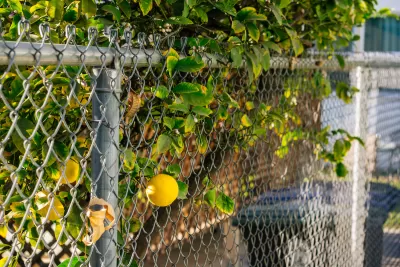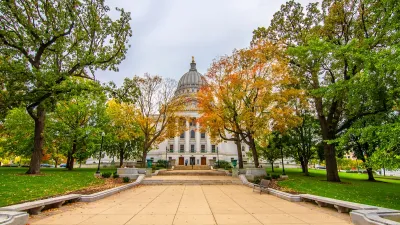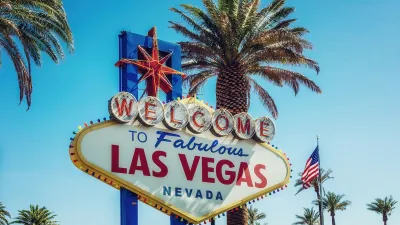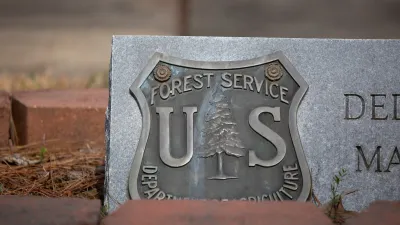Planting food-producing trees can offer both shade and a source of healthy foods in concrete-dominated neighborhoods.

It’s a well-known fact that trees can help reduce the urban heat island effect and lower temperatures in cities. Now, urban forestry advocates are touting another potential benefit of trees: food. As Max Graham explains in Grist, “Volunteers, school teachers, and urban farmers in cities across the country are planting fruit and nut trees, berry bushes, and other edible plants in public spaces to create shade, provide access to green space, and supply neighbors with free and healthy food.” In Tucson, an effort to plant mesquite trees combines the need for shade in the sun-drenched Arizona city with the mesquite’s traditional role as a food plant.
While urban forests are unlikely to provide a steady food supply for everyone who needs it, they can help supplement diets and provide access to fresh fruits. In Philadelphia, the Philadelphia Orchard Project produced over 11,000 pounds of fresh produce last year. “Another well-established food forest skirts the Old West Church in Boston, where volunteers have spent a decade transforming a city lawn into a grove of apple, pear, and cherry trees hovering over vegetable, pollinator, and herb gardens.”
FULL STORY: Hot? Hungry? Step inside these food forests.

Study: Maui’s Plan to Convert Vacation Rentals to Long-Term Housing Could Cause Nearly $1 Billion Economic Loss
The plan would reduce visitor accommodation by 25,% resulting in 1,900 jobs lost.

North Texas Transit Leaders Tout Benefits of TOD for Growing Region
At a summit focused on transit-oriented development, policymakers discussed how North Texas’ expanded light rail system can serve as a tool for economic growth.

Why Should We Subsidize Public Transportation?
Many public transit agencies face financial stress due to rising costs, declining fare revenue, and declining subsidies. Transit advocates must provide a strong business case for increasing public transit funding.

How to Make US Trains Faster
Changes to boarding platforms and a switch to electric trains could improve U.S. passenger rail service without the added cost of high-speed rail.

Columbia’s Revitalized ‘Loop’ Is a Hub for Local Entrepreneurs
A focus on small businesses is helping a commercial corridor in Columbia, Missouri thrive.

Invasive Insect Threatens Minnesota’s Ash Forests
The Emerald Ash Borer is a rapidly spreading invasive pest threatening Minnesota’s ash trees, and homeowners are encouraged to plant diverse replacement species, avoid moving ash firewood, and monitor for signs of infestation.
Urban Design for Planners 1: Software Tools
This six-course series explores essential urban design concepts using open source software and equips planners with the tools they need to participate fully in the urban design process.
Planning for Universal Design
Learn the tools for implementing Universal Design in planning regulations.
Ascent Environmental
Borough of Carlisle
Institute for Housing and Urban Development Studies (IHS)
City of Grandview
Harvard GSD Executive Education
Toledo-Lucas County Plan Commissions
Salt Lake City
NYU Wagner Graduate School of Public Service





























